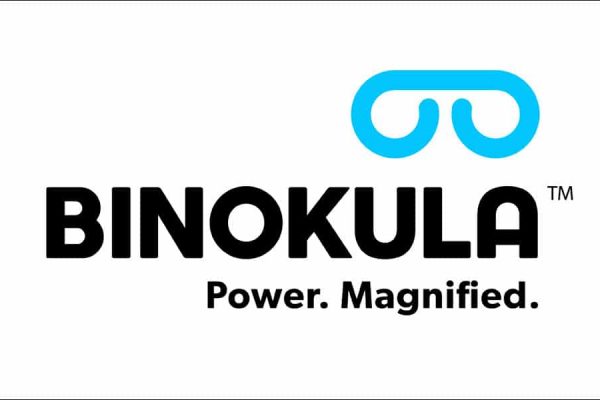Social media’s dodgy reputation is an opportunity for brands to step up and credibly position themselves. Data advisory services firm, Stellar Consulting, known for its specialised data insights across the private and public sector, offers five pointers on the mistakes to avoid.
1. Lack of brand consistency
The digital landscape is like a crowded room, filled with chatter from both individuals and brands. If you’re not careful, your brand will be overshadowed by the noise. Take the social learning of Tourism New Zealand. They found that running separate campaigns with different messaging doesn’t always to respond to different contexts. By contrast, the shift to unified messaging with 100% New Zealand rapidly kicked branding into gear. Consistency in the brand presentation has been shown to increase revenue by 33 percent. Differentiation on social media works best when it is layered and reflects what the customer needs from a brand – not what the brand needs from a customer.
Tina Moore, Founder/Director of social media specialist firm, the Attention Agency explains the value of having a well-strategised, cohesive brand voice in place – and sticking to it. “Your audience will follow you for a particular reason – for example, if you’re a witty brand, by all means, stay on that path. If you’re not, don’t attempt to wander into meme territory if that’s ‘off-brand’ for you. Take a step back and look at how all of your content appears together – does it look and sound cohesive? “
“It’s a good idea to have a written style guide, and outline your ‘tone of voice’,” she suggests. “Be consistent with the language you use, the style of imagery, and type of content.”
2. Working without a plan
The social media space can easily become reactive and sensationalist, leading to impulsive reactions and gaffs. Take the example the social backlash in response to a social post about the tongue-in-cheek wording on Dolce & Gabbana‘s Fall ’17 collection sneakers, graffiti art. This led to an embarrassing, fiery exchange between Stefano Gabbana and onlookers. The audience is spending more time than ever browsing social media. So, it must be an essential element of the business marketing strategy.
Even if the overarching objectives remain exactly the same, you still must assess and understand the wider context of what’s happening in the social media element of your business. Your overarching objectives must influence your posting. For example, if your objective is to lead visitors to purchase, then your social media posts should include a call-to-action. On the other hand, if brand awareness of your business is your aim, your primary focus might be to pay close attention to your imagery.
Different audiences go-to channels for specific purposes. For example, the data indicates video and photo posts that show a story or are emotional perform better on Facebook and Instagram, while breaking news responds best to Twitter’s real-time community, and company and job news is dominated by LinkedIn audiences. The channel matters – customise messages according to the social media channel you use.
3. Being rigid with your agenda
On the flip side, sticking too tightly to a plan will result in a lack of responsiveness to the surrounding cultural context and current trends. Think trivialising important topics and tone-deaf attempts at pop culture tie ins.
Finding the balance between planned and reactive social media posts is also largely a matter of trial-and-error. Rather than sweeping, time-consuming changes, real-time monitoring of the metrics behind your campaigns allows small tweaks to be made to a social media strategy.
Aligning a brand’s social voice and content with its audience fosters participation in conversation on topics that are top of mind for your audience. This should stretch to cover both the good news, but also should acknowledge when things don’t seem to be going right.
Moore says, “Being flexible and responsive to what’s happening socially and culturally is critical.”
“Adapt your social messaging to the mood. For example, think of the global cultural moments in the last year like the Black Lives Matter movement or even the COVID situation. You need to consider how your audience is feeling during these moments. Ask yourself whether it’s really appropriate to go out with a strong “everything’s great” message when the tone might actually be quite sombre?
4. Failing to listen
If you don’t listen to your audience and what they care about, you risk turning them off your brand. Think an April Fools Day joke that might actually verge on the offensive, or treating a serious global event as an opportunity for spin and promotion.
Seek to understand your target audience. After all, people want to engage with their favourite brands and connect with them. Post content that is relevant to your audience and their interests, as well as to your brand in some way, to trigger a conversation as well as shares. 86 percent of consumers say that authenticity is a key factor in deciding on the brands they like and support.
Seeking authenticity is a growing trend – Millennial and Gen Z consumers demand that businesses care for something more than just profit; if they can’t see that from a brand, they aren’t hesitating to look for a brand that does. Social media listening and monitoring tools also enable tracking of what audiences are interested in. They allow monitoring of these possibilities from as many angles as possible. There are usually special settings for alerts when an abnormal surge in mentions takes place — often an indicator that something has gone awry.
Listening has always been the underlying driver of audience responsiveness, however, it may be even more important now than ever before. There’s the risk that leaders get diverted from their strategised unique social media personality and cave in the turmoil of misinformation. This can lead to playing copy-cat to other brands, or rash one-time gestures.
Companies make the mistake of posting the same messaging and content on all social media channels. Don’t be like that; listen to the subtleties of each channel and cater to each channel’s own demographics, algorithms and unspoken rules.
5. Forgetting the social, posting about products
Being overly promotional or ‘sales-y’ poses risks to any brand looking to truly build loyalty and could result in hasty branding stunt seen as lacking authenticity. Yes, social media holds social selling opportunities, but you’ll truly become the source of knowledge of your industry by answering relevant questions.
Your social media posting is about building a social community – it’s most certainly not an endless infomercial. Engage with your audience based on what they like, and what you can offer them.
More than ever, audiences want brands to take a stand on topical issues. In fact, Edleman research finds two-thirds (64 percent) of consumers around the world would boycott a brand or buy from a it solely based on its position on a social or political issue.
This community focus should include your company’s staff, to build up the organisational advocacy. “Help employees help the company on social media – become fans, share etc.”
Takeaways
High-quality content is more sought after as how audiences define “high quality” continues to develop. In one social media context, impactful content could mean breaking down science-backed advice into a sharable graphic. In another, it could mean gathering and sharing light-hearted user-led selfies. Across the gamut, social media audiences are expecting more about what social media campaigns can and should respond to.
When choosing what your business social media strategy will highlight, we recommend you opt for those that:
- Offer a truly unique, fresh take on your familiar brand, product, service or industry
- Tactfully communicate values that resonate with those of your audience
- Deliver memorable experiences, on- and off-screen
By avoiding the common mistakes, and responding to your audiences’ interests, you can create an AI-led social media strategy that’s easy, effective and valued – something that everyone in the company will understand and speak to.





